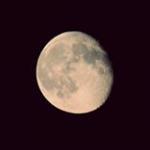
dr_jon
-
Posts
53 -
Joined
-
Last visited
Reputation Activity
-
 dr_jon got a reaction from UncleBobsPhotography in I bought a Canon EOS R5 - potential overheating solutions
dr_jon got a reaction from UncleBobsPhotography in I bought a Canon EOS R5 - potential overheating solutions
Is this really the issue though, or does the CPU (presumably a SoC in reality) never get so unhappy it needs a heatsink (and they can run at 70C case temperature, 100C internally, probably way more than assorted other components in the camera body). (BTW 45C and above is not something you want to touch.)
As there are YouTube videos showing you can record 4k HQ for 4 hours to an external recorder provided no cards are in the camera that suggests the issue is:
(1) The super-whizzy cards get too hot and aren't rated to record reliably when hot, so the camera stops trying to record
(2) The SoC gets a lot hotter when doing H.265 compression
(3) Both
Someone needs to record 4k HQ to a fast SD UHS II card with the other slot empty, IMHO...
-
 dr_jon got a reaction from IronFilm in Panasonic: We will accelerate the LUMIX project under new structure
dr_jon got a reaction from IronFilm in Panasonic: We will accelerate the LUMIX project under new structure
I struggle to see how splitting the Micro Four Thirds cameras off from the Professional Video Division (which seems an ideal fit, except the latter is profitable and the former not-so-much) and making people redundant is quite such a positive as they are trying to spin it... It will be interesting to see what happens, but IMHO "redoubled" seems like marketing spin to keep people buying the products. Not that I'm suggesting cameras are doomed, but I think the ILCs will get trimmed somewhat along the way...
-
 dr_jon got a reaction from zetty in Time to step up - Panasonic GH5 must go 6K Super 35mm to compete in 2016
dr_jon got a reaction from zetty in Time to step up - Panasonic GH5 must go 6K Super 35mm to compete in 2016
It's a tricky one. They can improve the DR by lowering the read noise and 3.1 electrons is a fair bit these days. To reduce the shot noise they need to capture more Photons, but the lens f-ratio controls how many fall on the sensor - same lens, same number of Photons. You can improve the Quantum Efficiency, but 58% is really good. You can weaken the colour filters to let a bit more of other colours through. However if you make more electrons you need to make a bigger pixel to store them, which gets harder for the same surface area. I can see them improving the DR (but I don't think they will, as they will want 50p/60p which mean running it faster, which means more noise, so other improvements will get eaten up), but I think for overall noise all they can do is what people have mostly been doing, which is implement ever cleverer noise reduction in their processor. It's doable, but I don't think it'll get you to where Neat Video can get you now. Just my opinion though. Well, except the physics bits.
(Edit) Should have said, they can maybe improve the DR a bit if they use the Arri/Canon way of splitting the pixels up, although I suspect that would run into a lot of patents.
-
 dr_jon got a reaction from GlueFactoryBJJ in Time to step up - Panasonic GH5 must go 6K Super 35mm to compete in 2016
dr_jon got a reaction from GlueFactoryBJJ in Time to step up - Panasonic GH5 must go 6K Super 35mm to compete in 2016
But they are. A FF f2.8 lens will capture the same amount of light over the image as a m43 f1.4 lens (both wide-open). That also means you get the same shot noise (which is most of the noise in the image). You need to increase the ISO on the FF camera by 2 stops to get the same exposure. However that doesn't affect the noise as (i) most of the noise is in the light and changing the ISO won't change that and (ii) the sensor read noise will usually fall a bit with increasing ISO, so the total noise will be lower if anything. (Think of it this way... at the same illumination level if a f1.4 lens puts 1M photons onto a m43 sensor then a f2.8 lens will put 1M photons onto a FF sensor. Of those photons on average 1,000 will be the shot noise, in both cases.)
Increasing the ISO isn't a problem as the FF sensor will be able to capture around 4x the electrons of the m43 sensor due to its greater size. Increasing ISO by two stops knocks about a factor of 4 off that so it will be about the same as the m43 sensor and not saturate if the m43 sensor doesn't.
Also remember a 50mm f2.8 lens has the same diameter entrance pupil as a 25mm f1.4 lens (17.86mm) so the DoF will be the same at the widest aperture. The FoV will also be the same. Diffraction softening will also occur at the same DoF (it goes with DoF, regardless of format). Hence the minimum and maximum amounts of available DoF are the same.
-
 dr_jon got a reaction from Cas1 in Time to step up - Panasonic GH5 must go 6K Super 35mm to compete in 2016
dr_jon got a reaction from Cas1 in Time to step up - Panasonic GH5 must go 6K Super 35mm to compete in 2016
But they are. A FF f2.8 lens will capture the same amount of light over the image as a m43 f1.4 lens (both wide-open). That also means you get the same shot noise (which is most of the noise in the image). You need to increase the ISO on the FF camera by 2 stops to get the same exposure. However that doesn't affect the noise as (i) most of the noise is in the light and changing the ISO won't change that and (ii) the sensor read noise will usually fall a bit with increasing ISO, so the total noise will be lower if anything. (Think of it this way... at the same illumination level if a f1.4 lens puts 1M photons onto a m43 sensor then a f2.8 lens will put 1M photons onto a FF sensor. Of those photons on average 1,000 will be the shot noise, in both cases.)
Increasing the ISO isn't a problem as the FF sensor will be able to capture around 4x the electrons of the m43 sensor due to its greater size. Increasing ISO by two stops knocks about a factor of 4 off that so it will be about the same as the m43 sensor and not saturate if the m43 sensor doesn't.
Also remember a 50mm f2.8 lens has the same diameter entrance pupil as a 25mm f1.4 lens (17.86mm) so the DoF will be the same at the widest aperture. The FoV will also be the same. Diffraction softening will also occur at the same DoF (it goes with DoF, regardless of format). Hence the minimum and maximum amounts of available DoF are the same.
-
 dr_jon got a reaction from Nathan Gabriel in Time to step up - Panasonic GH5 must go 6K Super 35mm to compete in 2016
dr_jon got a reaction from Nathan Gabriel in Time to step up - Panasonic GH5 must go 6K Super 35mm to compete in 2016
Diffraction is an inherent property of light passing through an aperture. What you end up with is each part of the light turns into an Airy Disc with particular physical properties. The diameter of the disc only depends on the f-stop, nothing else. Hence the smaller the pixels the more of an issue it is. This is worth a read and includes a calculator (just ignore the camera section in the lower half):
http://www.cambridgeincolour.com/tutorials/diffraction-photography.htm
(Astronomers are even more interested, as stars, being point light sources, really show the effect.)
Generally (IMHO) diffraction blurring starts to become an issue at the pixel level when it hits two pixel widths and gets worse at three widths. Exactly how bad it is depends on stuff like the strength of the anti-aliasing filter (if any) and how much blurring the de-bayering algorithm adds (which is always some). It isn't a hard limit, it's always there and just gets worse, so people have to define the point they start to care about it, which varies somewhat depending on who you read. For still photography it has been taken, for a fair while now, that a 30um blur on a FF sensor (divide by crop factor for others) is the limit for good sharpness of uncropped still images (which comes from lots of perceptual testing of people and a bunch of assumptions, like using 8"x10" images at a particular viewing distance). At the pixel level the 2-3 pixel widths seems to be where people are. I personally think if you are at 2 pixels or less you can ignore diffraction effects at the pixel level (compared to other factors).
(Edit) P.S. reverse engineering the graph on the previous page gives about 4.4um as the diffraction limit for f8 (10.7um Airy disc), which is 2.43 pixels and 5.8um for f11 (14.7um Airy disc), which is 2.53 pixels, so I suspect they used 2.5 pixels as their limit. It doesn't magically get really bad at this point, just gradually worse.
P.P.S. Also remember as you move away from the plane of focus the image gets gradually blurrier, this is where the 30um value is most often used, as the limits of the depth of field. Diffraction softening just adds to this.
-
 dr_jon got a reaction from Nathan Gabriel in Time to step up - Panasonic GH5 must go 6K Super 35mm to compete in 2016
dr_jon got a reaction from Nathan Gabriel in Time to step up - Panasonic GH5 must go 6K Super 35mm to compete in 2016
Am I reading this incorrectly? It seems to agree with me to a decent approximation. The f8 and m43 lines intersect at about 13MP, which is about the 8MP (in a 16:9 crop) needed for 4k.
-
 dr_jon got a reaction from IronFilm in Time to step up - Panasonic GH5 must go 6K Super 35mm to compete in 2016
dr_jon got a reaction from IronFilm in Time to step up - Panasonic GH5 must go 6K Super 35mm to compete in 2016
I'm afraid I struggle to see the business case here. Panasonic aren't doing that well selling cameras (in Japan they are now selling less mirrorless than Canon) and new lenses just trickle out. I doubt anyone inside Panasonic sees throwing lots of money into an all-new camera system as likely to be a winner, especially in a generally declining market. I think they only sell a decent number of GH4s as it offers a lot for the money and is stills and video. No way will videographer sales (if they effectively ditch the stills side by only having 8MP with m43 lenses) get them back that money at similar prices on a new format. I think if they go to a different sensor size they will have to use 3rd party lenses (developing their own being an unlikely investment), so whose mount would be possible - Canon EF maybe using the V35 sensor (4096x2160)? Won't be any good for stills. Plus sounds tricky to avoid damaging higher-margin V35 LT sales... I can't see it. To do your suggestion at a minimum they'll need someone else to have designed a sensor just for this camera and to be happy about low sales volumes for that sensor (which usually means prices that drive 5-figure camera pricing, so they've pretty much just designed the V35 LT again).
P.S. I read your whole article before coming to the forum for my first post on the subject.
-
 dr_jon got a reaction from berkenboom in Time to step up - Panasonic GH5 must go 6K Super 35mm to compete in 2016
dr_jon got a reaction from berkenboom in Time to step up - Panasonic GH5 must go 6K Super 35mm to compete in 2016
But they are. A FF f2.8 lens will capture the same amount of light over the image as a m43 f1.4 lens (both wide-open). That also means you get the same shot noise (which is most of the noise in the image). You need to increase the ISO on the FF camera by 2 stops to get the same exposure. However that doesn't affect the noise as (i) most of the noise is in the light and changing the ISO won't change that and (ii) the sensor read noise will usually fall a bit with increasing ISO, so the total noise will be lower if anything. (Think of it this way... at the same illumination level if a f1.4 lens puts 1M photons onto a m43 sensor then a f2.8 lens will put 1M photons onto a FF sensor. Of those photons on average 1,000 will be the shot noise, in both cases.)
Increasing the ISO isn't a problem as the FF sensor will be able to capture around 4x the electrons of the m43 sensor due to its greater size. Increasing ISO by two stops knocks about a factor of 4 off that so it will be about the same as the m43 sensor and not saturate if the m43 sensor doesn't.
Also remember a 50mm f2.8 lens has the same diameter entrance pupil as a 25mm f1.4 lens (17.86mm) so the DoF will be the same at the widest aperture. The FoV will also be the same. Diffraction softening will also occur at the same DoF (it goes with DoF, regardless of format). Hence the minimum and maximum amounts of available DoF are the same.
-
 dr_jon got a reaction from Nikkor in Time to step up - Panasonic GH5 must go 6K Super 35mm to compete in 2016
dr_jon got a reaction from Nikkor in Time to step up - Panasonic GH5 must go 6K Super 35mm to compete in 2016
But they are. A FF f2.8 lens will capture the same amount of light over the image as a m43 f1.4 lens (both wide-open). That also means you get the same shot noise (which is most of the noise in the image). You need to increase the ISO on the FF camera by 2 stops to get the same exposure. However that doesn't affect the noise as (i) most of the noise is in the light and changing the ISO won't change that and (ii) the sensor read noise will usually fall a bit with increasing ISO, so the total noise will be lower if anything. (Think of it this way... at the same illumination level if a f1.4 lens puts 1M photons onto a m43 sensor then a f2.8 lens will put 1M photons onto a FF sensor. Of those photons on average 1,000 will be the shot noise, in both cases.)
Increasing the ISO isn't a problem as the FF sensor will be able to capture around 4x the electrons of the m43 sensor due to its greater size. Increasing ISO by two stops knocks about a factor of 4 off that so it will be about the same as the m43 sensor and not saturate if the m43 sensor doesn't.
Also remember a 50mm f2.8 lens has the same diameter entrance pupil as a 25mm f1.4 lens (17.86mm) so the DoF will be the same at the widest aperture. The FoV will also be the same. Diffraction softening will also occur at the same DoF (it goes with DoF, regardless of format). Hence the minimum and maximum amounts of available DoF are the same.
-
 dr_jon got a reaction from IronFilm in Time to step up - Panasonic GH5 must go 6K Super 35mm to compete in 2016
dr_jon got a reaction from IronFilm in Time to step up - Panasonic GH5 must go 6K Super 35mm to compete in 2016
But they upscale a lower-res image to 4k, will people really see a lower resolution image as a good thing?
The Pros may not care, but as I said above will Panasonic want to do a camera that works better with competitor's lenses.
If the only market is Pros I don't think they'll sell enough to price it below the $4k mark.
-
 dr_jon got a reaction from Tim Park in 4K 8bit to 1080p 10bit 4:4:4
dr_jon got a reaction from Tim Park in 4K 8bit to 1080p 10bit 4:4:4
I just used the free version of Cliptoolz Convert to change a GH4 4k SooC file:
General
Format : MPEG-4
Format profile : Base Media / Version 2
Codec ID : mp42
File size : 763 MiB
Duration : 1mn 6s
Overall bit rate mode : Variable
Overall bit rate : 96.7 Mbps
Video
ID : 1
Format : AVC
Format/Info : Advanced Video Codec
Format profile : High@L5.1
Format settings, CABAC : Yes
Format settings, ReFrames : 2 frames
Codec ID : avc1
Codec ID/Info : Advanced Video Coding
Duration : 1mn 6s
Bit rate mode : Variable
Bit rate : 95.1 Mbps
Maximum bit rate : 106 Mbps
Width : 3 840 pixels
Height : 2 160 pixels
Display aspect ratio : 16:9
Frame rate mode : Constant
Frame rate : 25.000 fps
Color space : YUV
Chroma subsampling : 4:2:0
Bit depth : 8 bits
Scan type : Progressive
Bits/(Pixel*Frame) : 0.459
Stream size : 751 MiB (98%)
Color primaries : BT.709
Transfer characteristics : BT.709
Matrix coefficients : BT.709
Audio
ID : 2
Format : PCM
Format settings, Endianness : Big
Format settings, Sign : Signed
Codec ID : twos
Duration : 1mn 6s
Bit rate mode : Constant
Bit rate : 1 536 Kbps
Channel(s) : 2 channels
Sampling rate : 48.0 KHz
Bit depth : 16 bits
Delay relative to video : 40ms
Stream size : 12.1 MiB (2%)
To an output target of ProRes HD/HQ 4:4:4 with scaling to 1920x1080 and got:
General
Format : MPEG-4
Format profile : QuickTime
Codec ID : qt
File size : 2.13 GiB
Duration : 1mn 6s
Overall bit rate mode : Variable
Overall bit rate : 277 Mbps
Writing application : FFmbc 0.7
Video
ID : 1
Format : ProRes
Format version : Version 1
Codec ID : ap4h
Duration : 1mn 6s
Bit rate mode : Variable
Bit rate : 275 Mbps
Width : 1 920 pixels
Height : 1 080 pixels
Display aspect ratio : 16:9
Frame rate mode : Constant
Frame rate : 25.000 fps
Color space : YUV
Chroma subsampling : 4:4:4
Scan type : Progressive
Bits/(Pixel*Frame) : 5.308
Stream size : 2.12 GiB (99%)
Writing library : ffm0
Language : English
Color primaries : BT.709
Transfer characteristics : BT.709
Matrix coefficients : BT.709
Audio
ID : 2
Format : PCM
Format settings, Endianness : Big
Format settings, Sign : Signed
Codec ID : twos
Duration : 1mn 6s
Bit rate mode : Constant
Bit rate : 1 536 Kbps
Channel(s) : 2 channels
Channel positions : Front: L R
Sampling rate : 48.0 KHz
Bit depth : 16 bits
Stream size : 12.1 MiB (1%)
Language : English
Any use? Though do note Cliptoolz Convert is discontinued so you might need to hunt around to find a copy. (It went from paid -> free -> discontinued, I think due to issues with using Prores.) It does claim to handle 4k scaling well, see the site: http://hdcinematics.com/convert-V2.html
(Edit) The download link seems to work, which it didn't a while back:
-
 dr_jon got a reaction from MattW in Camera recommendations
dr_jon got a reaction from MattW in Camera recommendations
You didn't talk budget, or I missed it ;-)
The problem with the GH4 (and all the Panasonics) is it only used 70% of the pixels to make 1080p, so you get some moire/aliasing (high contrast edges do not tend to stay where they should, but pop around a bit). You get a much better result shooting 4k and downscaling. It's not awful, the GH3 was much worse, but it can be annoying/distracting.
The A7s or sII will give a cleaner 1080p and the II has a built-in stabiliser (although I think I'd rather have Panasonic's 12-35 stabilised lens on a GH4). Also any low light issues disappear instantly. The GH4 is a better video camera though, just the moire isn't optional in 1080p. (Edit) Oh, forgot to say, the GH4's 4k is cleaner than the A7s', not sure about the mk II.
All IMHO.
-
 dr_jon got a reaction from Marco Tecno in V-log unlocked for free!
dr_jon got a reaction from Marco Tecno in V-log unlocked for free!
I do wonder if the reason it's a paid upgrade isn't so much about making money but that it's tricky to use well and if they gave it to everybody there'd be lots of people saying bad things about the GH4. Hence this way they restrict it to people who might have a vague clue what they are doing...
I do like the free trial option though, as I was very 50:50 on whether to just stick with Cinelike-D. Also it looks like there are some things needing sorting in another firmware version (e.g. histograms, zebras) so they should be able to charge all the people that seriously want to use it at some point and as a bonus not leave people who don't like it feeling slightly ripped off.
-
 dr_jon got a reaction from Mat Mayer in V-log unlocked for free!
dr_jon got a reaction from Mat Mayer in V-log unlocked for free!
There isn't a hack, they just forgot to stop VLog-L being selected by one of the methods it can normally be if the upgrade isn't present. A bit embarrassing for them.
-
 dr_jon got a reaction from zetty in V-log unlocked for free!
dr_jon got a reaction from zetty in V-log unlocked for free!
If I were Panasonic I'd be tempted to do a 2.4 firmware with some nice goodies in and locked-down V-Log, some of the stuff Olympus just announced for their next firmware upgrades would be nice. Giving people their money back would be tricky, but the stable door is still wide open and the Horse already in another time-zone...
dwijip - Where did Panasonic admit their mistake?
-
 dr_jon got a reaction from Lintelfilm in V-log unlocked for free!
dr_jon got a reaction from Lintelfilm in V-log unlocked for free!
I've seen 3rd party VLog LUTs for the GH4, where did the official one come from? (Do you mean the Varicam35 one, it's just you said GH4-specific?)
Since it's completely out of the bag as of Erik's post here's the reddit link where they talk about the zebras (plus how to enable it):
https://www.reddit.com/r/Filmmakers/comments/3l1qab/panasonic_gh4_vlogl_available_for_free_just/
-
 dr_jon got a reaction from kaylee in Canon 5DS takes a backwards step for video - severe rolling shutter, moire and lack of uncompressed HDMI
dr_jon got a reaction from kaylee in Canon 5DS takes a backwards step for video - severe rolling shutter, moire and lack of uncompressed HDMI
I shot a rolling shutter test for the dvxuser thread, or anyone else who wants to play... there is supposed to be quite an angle on the vertical line and I moved it fast enough to achieve it.
http://www.dvxuser.com/V6/showthread.php?303559-Measuring-rolling-shutter-put-a-number-on-this-issue!
Oh and I agree they don't have the bandwidth to read the whole sensor, but I really am sure I did see it somewhere (planning on buying the camera does aid memorising odd facts that come up). They should certainly be able to read two sensor pixels per video pixel and could do who knows what on-sensor combining to make those pixels. Maybe they just meant they used all the pixels in the 16:9 area with on-sensor combining, it is very clean and my initial ISO 3200 test is also looking okay.
-
 dr_jon got a reaction from kaylee in Canon 5DS takes a backwards step for video - severe rolling shutter, moire and lack of uncompressed HDMI
dr_jon got a reaction from kaylee in Canon 5DS takes a backwards step for video - severe rolling shutter, moire and lack of uncompressed HDMI
Thanks - that was my (very unexpected) reaction, and why I commented...
-
 dr_jon got a reaction from kaylee in Canon 5DS takes a backwards step for video - severe rolling shutter, moire and lack of uncompressed HDMI
dr_jon got a reaction from kaylee in Canon 5DS takes a backwards step for video - severe rolling shutter, moire and lack of uncompressed HDMI
It just used the Fine Detail picture style I was using for stills, so basically had a USM ("Un-Sharp Mask", which sharpens the image) applied to it. I was only interested in moire/aliasing so didn't bother with anything else (well, sensible shutter speed). If you actually wanted to shoot movies with it you'd use a different profile...
This one is hand-held and with the Neutral Picture Style (91MB, untweaked Picture Style - so can be better, note my total video shooting with the camera is these moire tests)...
https://vimeo.com/136118235
(Oh and remember the video shown on Vimeo is 720p and you need to download the 1080p version.)
It still completely destroys my GH3 and GH4 for moire/aliasing when shooting 1080p... please note this was my entire point. I am very impressed over this single item though. Bonus points for anyone else shooting this scene with their camera-of-choice!!!
BTW here's the maximum amount of stuff you can have super-imposed on the screen. You can turn much of it off, pretty much item by item. The settings are as per the video except it had a different picture style - Fine Detail here - and it was shot at f10, which you can probably see was needed from the histograms...
(You can also optionally clean the screen, I recommend Spontex micro-fibre cloths.)
-
 dr_jon reacted to Andrew Reid in Canon 5DS takes a backwards step for video - severe rolling shutter, moire and lack of uncompressed HDMI
dr_jon reacted to Andrew Reid in Canon 5DS takes a backwards step for video - severe rolling shutter, moire and lack of uncompressed HDMI
Thank you for drawing it to our attention.
-
 dr_jon reacted to Andrew Reid in Canon 5DS takes a backwards step for video - severe rolling shutter, moire and lack of uncompressed HDMI
dr_jon reacted to Andrew Reid in Canon 5DS takes a backwards step for video - severe rolling shutter, moire and lack of uncompressed HDMI
Second video is much nicer.
Wow.
That is one hell of a clean 1080p image going on.
Wonder why Canon themselves talked it down?!
Clearly they want us to buy the Cinema EOS cameras for video, don't they. Even to the point of them claiming their flagship DSLR has moire... when actually it looks to do far better full frame internal 1080p than the 1D X, 1D C, GH4 and 5D Mark III put together.
-
 dr_jon got a reaction from TheRenaissanceMan in Canon 5DS takes a backwards step for video - severe rolling shutter, moire and lack of uncompressed HDMI
dr_jon got a reaction from TheRenaissanceMan in Canon 5DS takes a backwards step for video - severe rolling shutter, moire and lack of uncompressed HDMI
It just used the Fine Detail picture style I was using for stills, so basically had a USM ("Un-Sharp Mask", which sharpens the image) applied to it. I was only interested in moire/aliasing so didn't bother with anything else (well, sensible shutter speed). If you actually wanted to shoot movies with it you'd use a different profile...
This one is hand-held and with the Neutral Picture Style (91MB, untweaked Picture Style - so can be better, note my total video shooting with the camera is these moire tests)...
https://vimeo.com/136118235
(Oh and remember the video shown on Vimeo is 720p and you need to download the 1080p version.)
It still completely destroys my GH3 and GH4 for moire/aliasing when shooting 1080p... please note this was my entire point. I am very impressed over this single item though. Bonus points for anyone else shooting this scene with their camera-of-choice!!!
BTW here's the maximum amount of stuff you can have super-imposed on the screen. You can turn much of it off, pretty much item by item. The settings are as per the video except it had a different picture style - Fine Detail here - and it was shot at f10, which you can probably see was needed from the histograms...
(You can also optionally clean the screen, I recommend Spontex micro-fibre cloths.)
-
 dr_jon got a reaction from BrorSvensson in Canon 5DS takes a backwards step for video - severe rolling shutter, moire and lack of uncompressed HDMI
dr_jon got a reaction from BrorSvensson in Canon 5DS takes a backwards step for video - severe rolling shutter, moire and lack of uncompressed HDMI
5Dsr (converted in about 30 mins so you'd have to download it now, 153MB):
https://vimeo.com/136023032
GH3 one really just plucked at semi-random (I just looked in two GH3 dirs with 50 moire/aliasing test videos between them, I have more dirs):
https://vimeo.com/136023791
Note I'm not a Plus/Pro member so will also show at 720p, hence you'll need to download it (115MB).
The GH4 looks a lot like the GH3. Except in 4k which is nice. These weren't really intended for public consumption or I'd have done them a lot better (although the quality would probably still drop off after the first 20 or so...). Looking at them there is so much that would make the 5Dsr one a better test, but looking at the other two videos I shot as well it still walks all over the GHx cameras in this single area. This was just the handiest one to upload.










